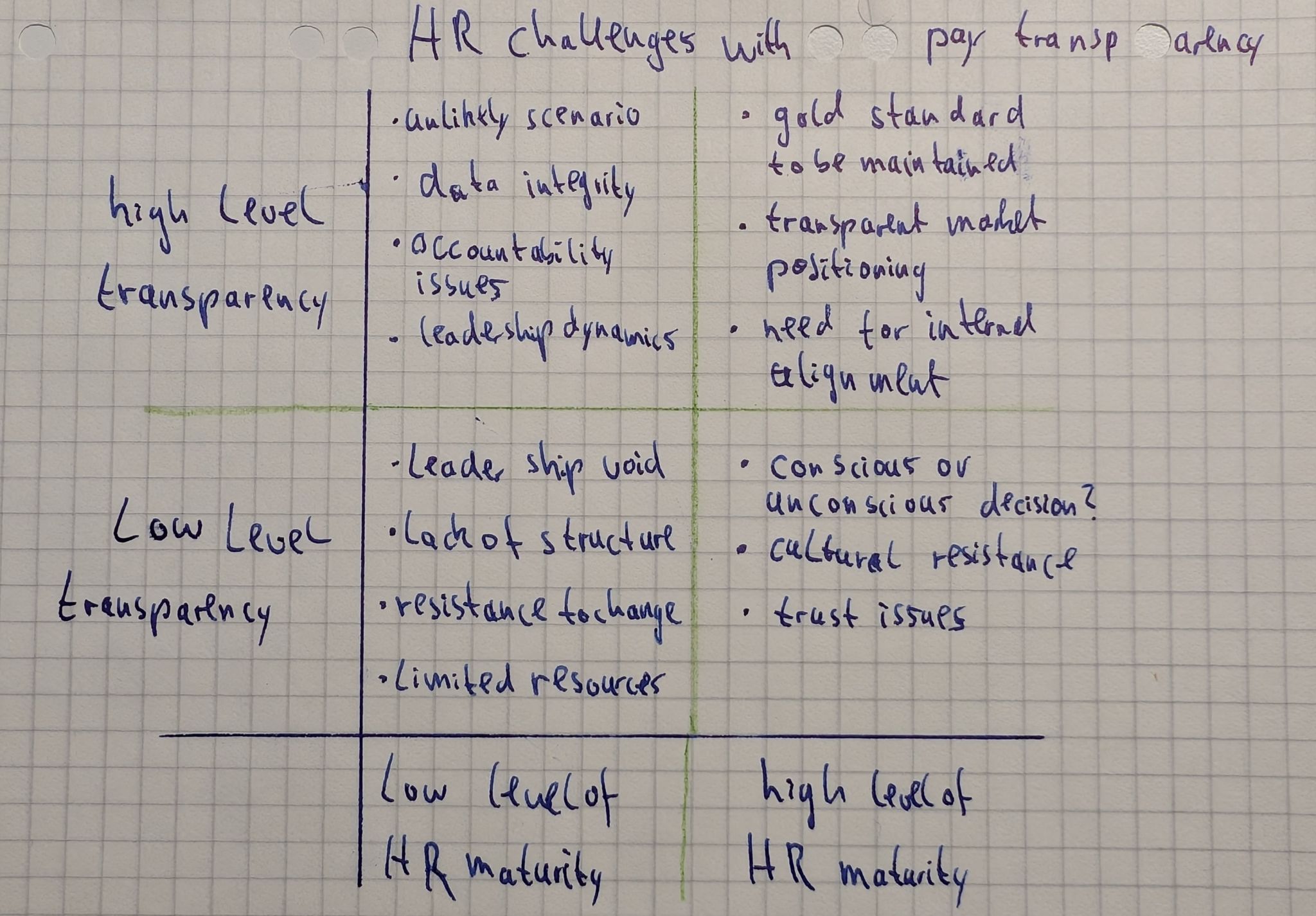
Interpreting The EU Pay Transparency Directive
While not binding legislation itself, the Directive requires EU member states to pass new legislation by June 2026. All companies with 100 or more employees in Europe will need to comply with a stringent set of rules which include:
- Providing pay ranges to applicants for greater transparency in job postings
- Providing information on the criteria for determining pay and pay progression
- Reporting and sharing information on the gender pay gap in the organisation
- Assessing the causes of pay gaps and take tangible steps to remedy them
Under these new regulations, companies will be required to go beyond paying the same for identical job roles. Instead, a set of gender-neutral job evaluation frameworks will need to be developed in order to ensure pay equity across similar categories of jobs.
Plus, as the name of the Directive implies, companies will suddenly need to become a lot more transparent about how they pay their staff. This includes:
- Pay transparency upon hiring: employers are required to disclose to job applicants their pay rates prior to the job interview, and they will be prohibited from inquiring about a candidate’s salary history.
- Pay transparency for existing employees: workers are entitled to request information on their individual pay and the average pay of categories of workers performing the same work, or performing what is deemed ‘work of equal value’.
The sticking point? Defining what constitutes ‘work of equal value’. Let’s take a look at how the Directive has clarified this key concept - and how companies can establish when two roles are equivalent.
How The Directive Clarifies Equal Work
To quote directly from the EU Directive, it says this about assessing the comparative value of work:
In accordance with the case of law of the Court of Justice, the value of work should be assessed and compared on the basis of objective criteria « devrait être évalué et comparé sur la base de critères objectifs » including educational, professional and training requirements, skills, effort, responsibility and working conditions, irrespective of differences in working conditions.
It continues:
The facilitate the application of the concept of work of equal value, especially for micro, small and medium-sized enterprises, the objective criteria to be used should include four factors: skills, effort, responsibility and working conditions « les critères objectifs à utiliser devraient inclure quatre facteurs »
Language is important here. In the original French, the Directive adopts the verb ‘devrait’ (should) as opposed to ‘doit’ (must). The overall impression? That the EU requirements leave a significant amount of space for interpretation.
One thing that’s clear is that, to comply, a job evaluation framework will need to be ‘objective’. It will also need to break roles down into constituent parts to analyse them.
Many of the job evaluation systems that companies currently use will fall short. Ultimately, whether the system chosen by the employer is in fact objectively gender-neutral will likely be a matter that’s decided by the courts.
How Are Member States Interpreting & Implementing The Directive?
As the 2026 deadline for implementing the Directive into national law looms, member states are already preparing for the sea change that the new requirements represent.
Sweden has made one of the first moves. They’re the first of the 27 member states to put forward a 388 page report, a result of a year long investigation, on how the Directive can be implemented into national law.
Compared to many other EU member states, Sweden was already ahead of the curve when it comes to pay equality, and some provisions set out by the Directive were already enshrined by national legislation.
However, there are also plenty of new requirements that Sweden, like all EU members, will need to implement. When discussing job evaluation, the report predicts that many organisations will need to change their job architecture and evaluation framework in order to comply with new requirements.
Elsewhere, the Spanish government has recently published its own job evaluation tool. Their approach stands in stark contrast to developments in commercial job evaluation systems as it heavily (>20%) focuses on working conditions, with their immense potential to discriminate in favour of male dominated roles.
Clearly, the job evaluation element of the EU directive could be interpreted in wildly different ways by member states. And the next challenge? Businesses implementing strategies and internal policies to comply with new national laws.
Many organisations don't have job evaluation in place, and those that have implemented one in the last decade have often fallen for the simplified approach of non-analytical job slotting.
So, with time ticking down to 2026, we’re likely to see businesses across the bloc scrambling to comply.
Establishing Equal Work? Make It Crystal Clear With gradar
With gradar, there’s no ambiguity about what constitutes equal work. As a tool that breaks roles down into a wide range of constituent factors such as professional knowledge, specific responsibilities and interpersonal skills, gradar offers a deeply analytical and highly objective approach to job evaluation. Crucially, the watertight point-factor evaluation method stands in court as an equal pay defence.
Our system is accessible, affordable and works for businesses of all sizes. Available in 27 languages (and counting!), it has an intuitive interface and easy functionality that means it can be used by your own HR team in-house.
We’re here to help businesses across the EU and beyond future-proof themselves against evolving pay transparency requirements. Sounds like something your organisation could use? Get in touch with our team today!


